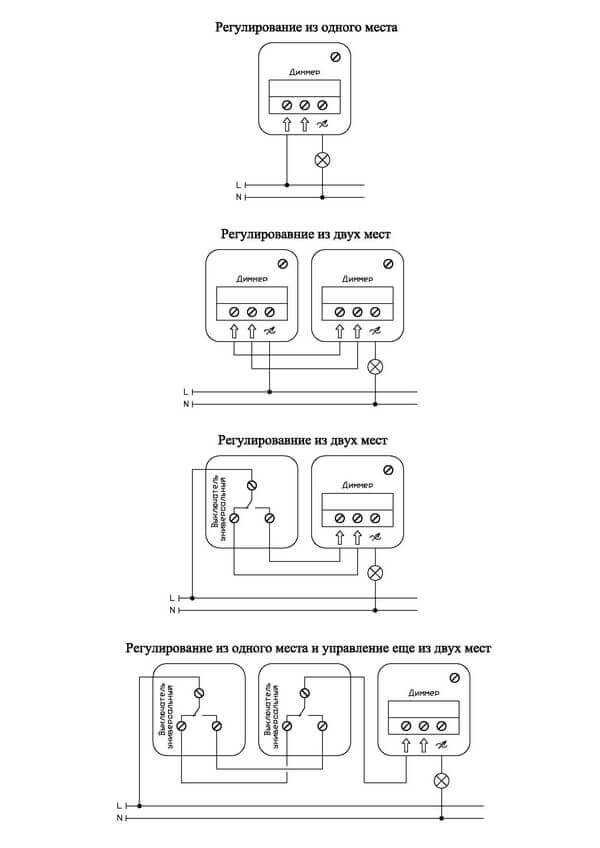How to connect the backlight and the chandelier through a dimmer and pass-through switches?
Accordingly, either a chandelier or a box is dimmed, or all together if both switches are turned on. In addition, the bed should have a switch for all this or separately. How to do it? The master had difficulties. You can have a simple scheme. thank
The circuit is given under the name "Serial connection" here in this article https://my.electricianexp.com/en/kak-podklyuchit-proxodnoj-dimmer.htmlwill be even better. You lying on the bed can make the light dim.
Well, either 1 dimmer and two two-gang switch through passage (or two single-key). The scheme of their connection is in this article. https://my.electricianexp.com/en/sxema-podklyucheniya-proxodnogo-odnoklavishnogo-vyklyuchatelya.html
But your backlight in the box, I assume that it is organized using a 12V LED strip, and it can not be adjusted with a normal dimmer. Based on this, it follows that a circuit with a single dimmer will not work if you use standard dimmers.
If you make it as simple as possible, the backlight box is turned on by one pass-through switch directly, and its brightness is regulated by a dimmer with a radio remote control, and the lamps by other pass-through dimmers or a series of dimmer + pass-through switches (see the diagram below, the last one in the figure).
Otherwise, you need to look for two dimmers (for 12V and 220V) with a 0-10V signal control, but if there are enough such dimmers for 12V devices, then for 220V I could not find an example that I could give in the answer.



